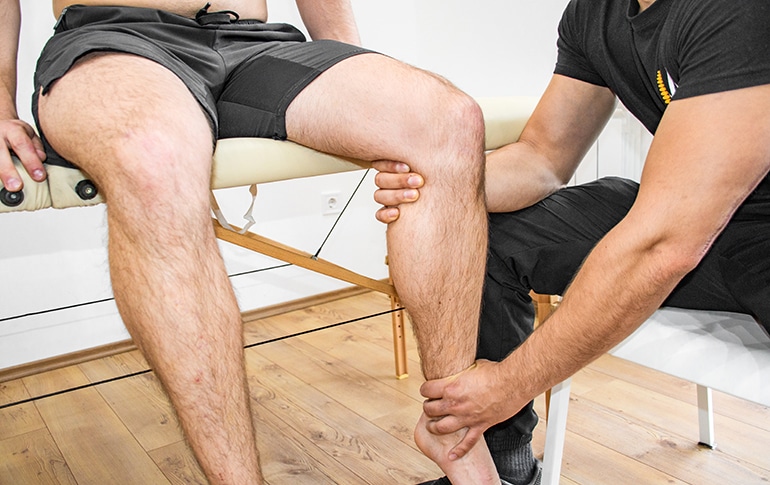
There are many types of knee injuries and conditions, which can be treated successfully by Physiotherapy in Australia. Below, there are 7 simple steps a Physiotherapist will take to determine whether you are suffering from a knee injury or osteoporosis in Australia.
1. Overview Of Your Medical History:
When you visit a physiotherapist, they will start by asking you about your medical history, such as whether your knee injury is acute or chronic, where it is located, how long you have been experiencing it and other related questions. This is to determine the severity of your pain and what treatment options are best for you.
2. Physical Exam
After your physiotherapist takes note of your medical history, they will proceed with a physical examination to pinpoint the areas where you are experiencing pain. By assessing your knee and focusing on specific pressure points, they will be able to determine whether the pain is caused by a bone problem or a ligament problem. By palpating the area and applying gentle pressure, they can narrow down the source of your pain.
3. X-Ray
If your physiotherapist is unsure about their findings from the medical history and physical examination, they may suggest an X-ray. An X-ray can provide more information about your knee injury and can reveal any underlying issues that you may have not mentioned to your physiotherapist. X-ray uses a small amount of radiation to create an image of your bones and joints. This imaging technique can help your therapist determine if the knee injury is caused by a bone problem, such as a fracture.
4. MRI (Magnetic Resonance Imaging)
In addition to X-ray, MRI is another imaging technique that can be used to diagnose knee injuries. While X-rays only show bone issues, MRI uses magnetic energy to examine the surrounding tissue, such as muscles and ligaments, which can help identify the cause of pain. If you are concerned about the potential risks of radiation exposure, it is important to note that MRI does not emit any radiation.
5. Ultrasound
If your physiotherapist is still uncertain about the cause of your knee injury, another diagnostic option is ultrasound. An ultrasound uses sound waves to examine the bursa, which is a fluid-filled cavity within the knee. This technique can detect tears or a build-up of fluid in the muscles, as well as excess fluid around the knee joint. Ultrasound is a non-invasive, safe, and effective method to diagnose knee injuries.
6. Radionuclide Bone Scan
For more complex cases, your physiotherapist may recommend a bone scan to identify any potential cysts, tumours, or other abnormalities that may be causing your knee injury. This type of scan uses a small amount of a harmless radioactive substance called technetium, which is injected into your bloodstream. The substance then travels to the bones and is scanned to detect any abnormalities. A bone scan can help provide more information about the underlying cause of your injury.
7. Arthroscopy
An arthroscopy is a surgical procedure used to determine an injury in which a small incision is made in the knee and an arthroscope is inserted. The arthroscope, which is a pencil-sized instrument with a magnifying lens, light, and camera, allows the surgeon to view the inside of the knee on a screen.
